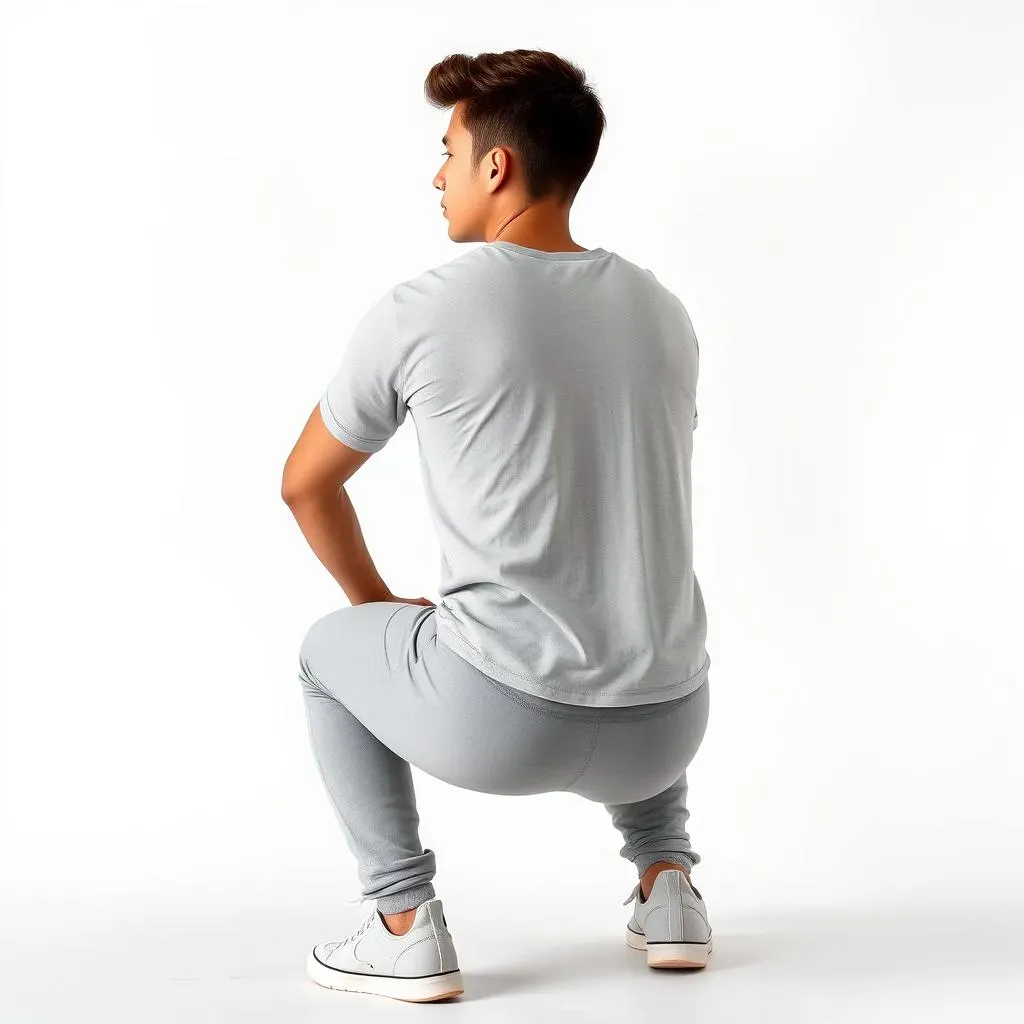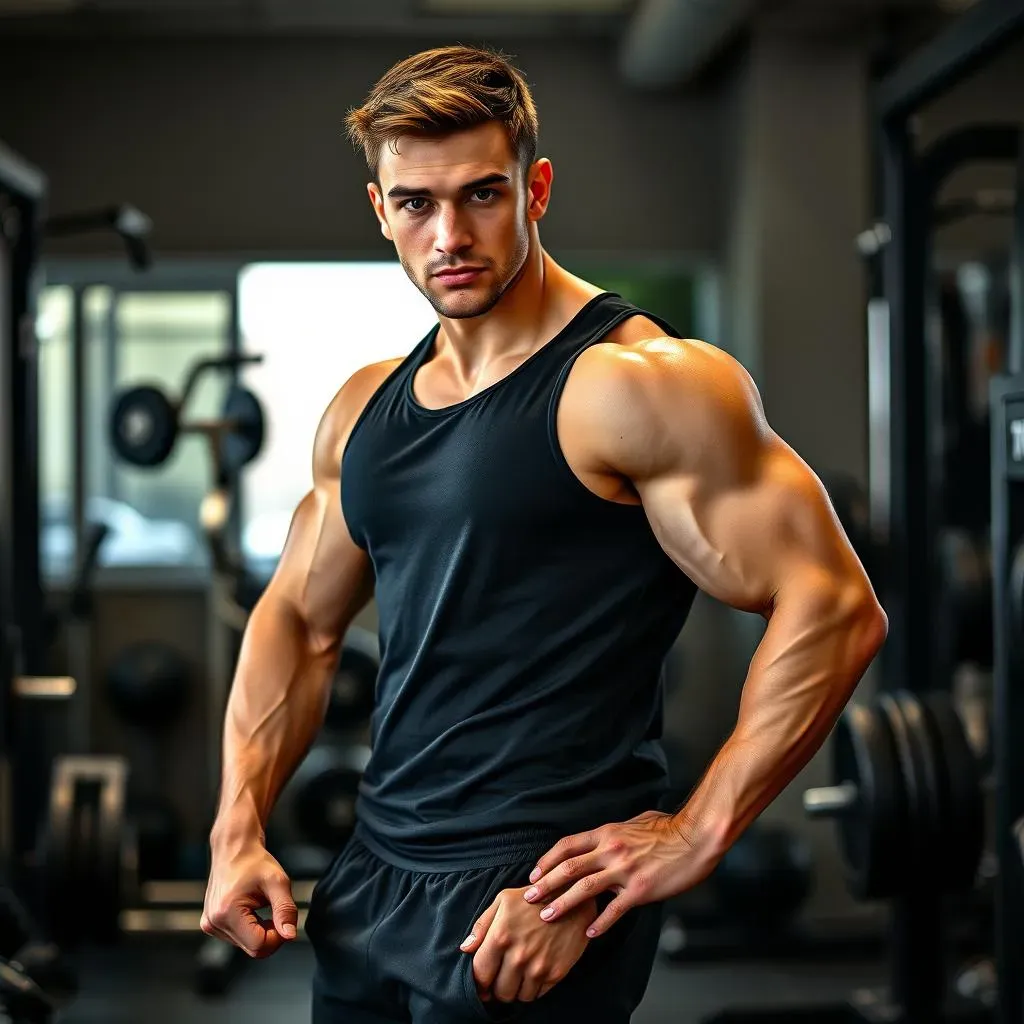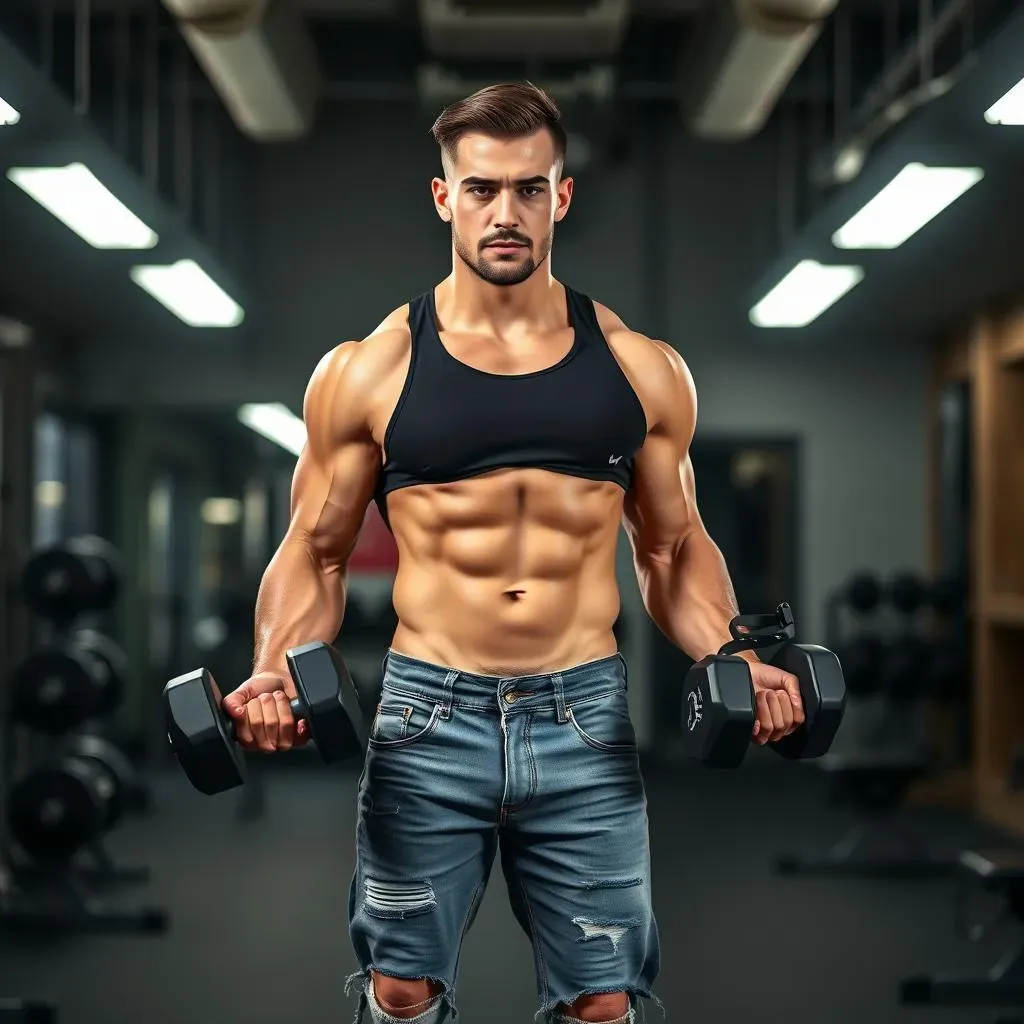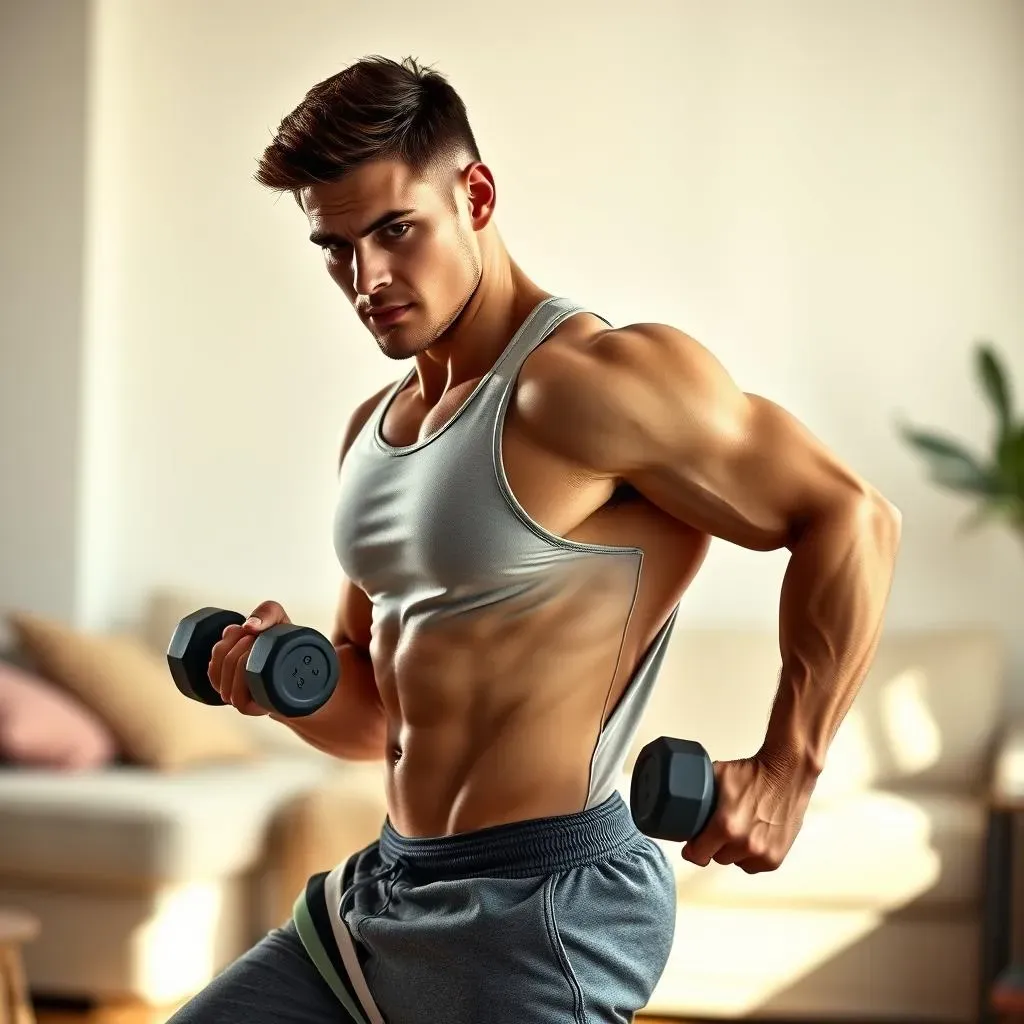Table of Contents
Gentlemen, let's talk about something often overlooked but undeniably crucial: your glutes! A strong, shapely butt isn't just about aesthetics; it's about power, stability, and overall fitness. This article is your ultimate guide to achieving a powerful physique, focusing specifically on butt workouts at home for men. We'll cut through the gym-bro jargon and get straight to the point, providing you with a clear understanding of your glute muscles, why training them matters, and the most effective exercises you can perform in the comfort of your own home. Forget expensive gym memberships and complicated equipment; we'll show you how to sculpt the butt of your dreams using only your bodyweight or minimal, easily accessible tools. Prepare to unlock your inner Adonis, one powerful glute activation at a time. This guide breaks down the science, provides practical exercises, and offers a structured workout plan, ensuring you have everything you need to embark on this transformative journey. Get ready to build a better, stronger you, from the ground up.
Best Butt Workouts at Home for Men: No Gym Needed

Best Butt Workouts at Home for Men: No Gym Needed
Bodyweight Bliss: Unleashing Glute Power Without Equipment
Let's be honest, hitting the gym isn't always feasible. Life gets in the way – work, family, that ever-growing pile of laundry. But that doesn't mean your glute-building journey has to stall! The beauty of calisthenics is its accessibility. You don't need fancy machines or expensive weights; your own bodyweight is more than enough to sculpt a powerful posterior. Think of your body as the ultimate, adaptable fitness machine. We'll focus on exercises that effectively target your glutes, building strength and shaping your physique, all from the comfort of your living room. Remember, consistency is key! Even short, focused sessions are far more effective than sporadic, intense workouts. Start small, build gradually, and watch your glutes grow.
I've seen firsthand the incredible results achievable with bodyweight training. One of my friends, a busy dad, completely transformed his physique using just a few simple exercises at home. He started with basic squats and glute bridges, then progressed to more challenging variations. Now he boasts a powerful, toned physique he's incredibly proud of. His success proves that you don't need a gym membership to achieve amazing results.
Exercise | Sets | Reps |
|---|---|---|
Glute Bridges | 3 | 15-20 |
Squats | 3 | 12-15 |
Lunges (alternating legs) | 3 | 10-12 per leg |
Advanced Bodyweight Moves: Taking Your Workout to the Next Level
Once you've mastered the basics, it's time to challenge yourself further! This is where you'll really see the magic of calisthenics. We'll explore more advanced bodyweight exercises that will push your glutes to their limits, leading to even more impressive results. These moves often incorporate variations that increase difficulty and muscle activation. Think pistol squats, single-leg glute bridges, and plyometric lunges. These exercises aren't just about building muscle; they also improve your balance, coordination, and overall athleticism. Don't be afraid to experiment and find what works best for you. Remember to always prioritize proper form over quantity. It's better to do fewer repetitions with perfect form than many with sloppy technique, which can lead to injuries.
A key element of progressing in calisthenics is understanding your body's limits and gradually increasing the difficulty. Think of it like climbing a mountain; you don't rush to the summit. You take it one step at a time, steadily gaining strength and endurance. Don't get discouraged if you can't perform advanced moves right away. It's a journey, not a race. Celebrate your progress and enjoy the process! Remember, every rep, every set, brings you closer to your goals.
- Pistol Squats (progress to these gradually!)
- Single-Leg Glute Bridges
- Plyometric Lunges
- Jump Squats
Building a Better Butt: Understanding Glute Anatomy and Function

Building a Better Butt: Understanding Glute Anatomy and Function
Building a Better Butt: Understanding Glute Anatomy and Function
Before we dive into exercises, let's talk about the stars of the show: your glutes! They're not just one muscle; they're a powerful trio: the gluteus maximus (the big one, responsible for the shape and power), the gluteus medius (the side stabilizer), and the gluteus minimus (the deep stabilizer). Understanding their roles is key to effective training. The gluteus maximus is your powerhouse muscle, responsible for hip extension (think powerful movements like running and jumping). The medius and minimus are crucial for hip stability and preventing injuries. Weak glutes can lead to knee pain, lower back pain, and poor posture. So, training them isn't just about aesthetics; it's about overall health and well-being. Imagine your glutes as the foundation of your lower body—a strong foundation ensures the rest of the structure is stable and functional.
- Gluteus Maximus: Hip extension, external rotation
- Gluteus Medius: Hip abduction, internal rotation
- Gluteus Minimus: Hip abduction, internal rotation
Think of it this way: your glutes are like the engine of your lower body. A strong engine translates to better performance in everything you do, from climbing stairs to playing sports. Ignoring your glutes is like driving a car with a sputtering engine; it'll eventually break down. By understanding their function, you can tailor your workouts to target each muscle effectively, leading to better results. Remember, it's not just about the size of your glutes; it's about their strength and functionality. A balanced approach, targeting all three glute muscles, is the key to building a strong, resilient, and aesthetically pleasing posterior.
Muscle | Primary Function | Why It Matters |
|---|---|---|
Gluteus Maximus | Hip extension, external rotation | Power, speed, jumping ability |
Gluteus Medius | Hip abduction, internal rotation | Stability, injury prevention |
Gluteus Minimus | Hip abduction, internal rotation | Stability, injury prevention |
Mastering the Moves: Effective Butt Exercises for Men at Home

Mastering the Moves: Effective Butt Exercises for Men at Home
Glute Bridge Variations: Building a Solid Foundation
Let's start with a classic: the glute bridge. It's simple, effective, and perfect for beginners. Lie on your back with knees bent and feet flat on the floor. Lift your hips off the ground, squeezing your glutes at the top. Hold for a second, then lower slowly. That's the basic move. Now, let's add some variations to challenge your glutes. Try single-leg glute bridges to increase the difficulty and improve balance. You can also elevate your feet on a bench or chair for an even greater challenge, increasing the range of motion and maximizing glute activation. Remember, proper form is key to avoid injury and maximize results. Focus on feeling the burn in your glutes; if you're feeling it elsewhere, adjust your form.
Think of the glute bridge as the cornerstone of your home butt workout. Mastering it opens doors to more advanced variations. It's incredibly versatile and adaptable to your fitness level. Start with the basic version, focusing on perfect form, then gradually incorporate the advanced variations as you grow stronger. It's about building a solid foundation, brick by brick, to reach your fitness goals. Consistency is what will make the real difference. Don't expect overnight miracles; this is a journey, and gradual progress is something to be proud of.
Variation | Description | Difficulty |
|---|---|---|
Standard Glute Bridge | Both feet flat on the floor | Beginner |
Single-Leg Glute Bridge | One leg extended in the air | Intermediate |
Elevated Glute Bridge | Feet elevated on a bench or chair | Advanced |
Squat Variations: King of the Lower Body
Next up, we've got the king of lower-body exercises: the squat! It's a compound movement, meaning it works multiple muscle groups simultaneously, including your glutes, quads, and hamstrings. Start with basic bodyweight squats, focusing on proper form – back straight, chest up, knees tracking over your toes. As you get stronger, you can progress to variations like jump squats (for explosive power), sumo squats (to target the inner thighs and glutes), and pistol squats (the ultimate squat challenge!). Remember to listen to your body and stop if you feel any pain. Don't let your ego drive your workout; prioritize proper form over the number of reps.
Squats are incredibly versatile. You can adjust the stance width, depth, and speed to target different muscle groups and increase the intensity. They're a fundamental movement pattern that translates to real-world activities, improving your strength, power, and balance. Think of squats as your all-around fitness superhero; they build strength, improve mobility, and contribute to overall fitness. Don't underestimate the power of a properly executed squat; it's the foundation of many successful fitness journeys. Consistency and gradual progression are key. Don't rush; let your body adapt and grow stronger.
- Standard Bodyweight Squat
- Jump Squat
- Sumo Squat
- Pistol Squat (advanced)
Lunges and Their Variations: Targeting Glute Strength and Stability
Lunges are another fantastic exercise for targeting your glutes, particularly the gluteus medius, which is crucial for hip stability. Start with forward lunges, stepping forward with one leg and lowering your body until both knees are bent at a 90-degree angle. Keep your front knee aligned with your ankle to avoid injury. As you progress, you can try reverse lunges, lateral lunges, and walking lunges. These variations challenge your balance and stability, further engaging your glutes and strengthening your core. Remember, control is key. Avoid bouncing or rushing; focus on smooth, controlled movements.
Lunges are a great way to build not only strength but also improve balance and coordination. They're a functional exercise, meaning they translate directly to real-world movements, improving your ability to perform everyday activities with ease and grace. Think of lunges as your secret weapon for building a strong, stable lower body; they not only sculpt your glutes but also improve your overall fitness. Incorporate them into your routine regularly, and you'll notice a significant improvement in your lower body strength, stability, and overall athleticism. Don't be afraid to experiment with different lunge variations to keep your workouts challenging and engaging.
Transform Your Physique: A Butt Workout Routine for Men at Home

Transform Your Physique: A Butt Workout Routine for Men at Home
Crafting Your Personalized Plan: Week-by-Week Progression
Now that we've covered the fundamentals, let's build a workout routine tailored to your needs. Remember, consistency is key. Start with a plan you can realistically stick to, even if it means fewer sessions initially. Focus on quality over quantity. It's better to perform a few exercises with perfect form than many with sloppy technique. Here's a sample plan to get you started. Remember to listen to your body; rest when needed, and don't push yourself too hard, especially when starting. Remember, this is a marathon, not a sprint; consistent effort will yield better results than sporadic intense workouts.
This plan uses a three-day-a-week split, allowing ample rest between sessions for muscle recovery. Feel free to adjust the number of sets and reps based on your fitness level. As you get stronger, gradually increase the difficulty by adding more reps, sets, or more challenging variations of the exercises. Remember to incorporate a proper warm-up before each workout and a cool-down afterward. This will help prevent injuries and improve your overall performance. This program is designed to be challenging but achievable, allowing you to progressively overload your muscles and achieve significant results over time.
Day | Workout |
|---|---|
Monday | Glute Bridges (3 sets of 15-20 reps), Squats (3 sets of 12-15 reps), Lunges (3 sets of 10-12 reps per leg) |
Wednesday | Rest or Active Recovery (light cardio, stretching) |
Friday | Glute Bridges (3 sets of 15-20 reps), Sumo Squats (3 sets of 12-15 reps), Walking Lunges (3 sets of 10-12 reps per leg) |
Saturday & Sunday | Rest |
Tracking Progress and Making Adjustments: The Key to Success
Tracking your progress is crucial for staying motivated and making adjustments to your routine. Keep a workout journal to record your sets, reps, and how you felt during each session. This will help you identify areas where you need to improve and make adjustments to your plan as needed. Don't be afraid to experiment with different exercises and variations to keep your workouts challenging and engaging. Remember, consistency is key, but variety helps prevent plateaus. This is where you'll personalize your plan, making it work for you and your lifestyle. Remember, fitness is a journey, not a destination, and adjusting your plan along the way is part of that journey.
Remember, everyone's body is different. What works for one person may not work for another. Be patient with yourself and celebrate your accomplishments along the way. Listen to your body and don't be afraid to take rest days when needed. The key to long-term success is consistency and a willingness to adapt your plan as needed. Remember, a sustainable workout plan is one you can stick with over the long term. It's about finding a balance between pushing your limits and listening to your body. The results will come, but consistency and patience are key elements to achieving your fitness goals.
- Keep a workout journal
- Track your progress (weight, measurements, photos)
- Adjust your plan as needed
- Celebrate your successes!
